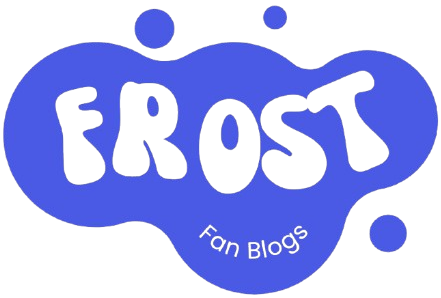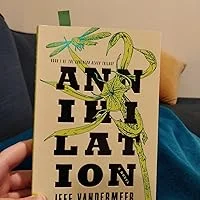Introduction
Jeff VanderMeer’s Annihilation is a genre-defying novel that fuses elements of science fiction, psychological horror, and ecological mystery. The first book in the Southern Reach Trilogy, Annihilation, immerses readers in a world of eerie uncertainty and strange, unexplainable phenomena. It focuses on a mysterious location known as Area X and follows a biologist, one of four scientists sent to explore it. In this article, we’ll break down the main themes, characters, and symbolism in Annihilation to offer a deeper understanding of the book. This “Annihilation book explained” guide will help you comprehend the novel’s complex narrative and its unsettling exploration of the unknown.
1. Background of the Book
About the Author: Jeff VanderMeer
Jeff VanderMeer is a critically acclaimed American author, well-known for his unique blend of speculative fiction and environmental themes. His works often feature ecological decay, psychological depth, and immersive world-building. Annihilation, published in 2014, is the first book in the Southern Reach Trilogy, followed by Authority and Acceptance. VanderMeer’s writing style is both atmospheric and philosophical, capturing the uncanny and the unknown.
Annihilation was praised for its haunting atmosphere and imaginative narrative, and it was later adapted into a 2018 film directed by Alex Garland. You can find more about VanderMeer and his works on his Wikipedia page.
Setting and Genre
Set in a mysterious and isolated location known as Area X, the novel challenges the boundaries of science fiction and psychological horror. The place is unlike anything the scientists have encountered: it is a land where the rules of reality seem to break down, and strange phenomena unfold at every turn. The novel seamlessly combines elements of horror, suspense, and speculative fiction, making it an unforgettable experience for readers.
2. Plot Summary (Without Major Spoilers)
Annihilation follows the story of a biologist who, along with three other scientists, a psychologist, an anthropologist, and a surveyor, embarks on an expedition to Area X. The expedition’s goal is to investigate the region and understand what has happened to the environment after its mysterious transformation.
The biologist narrates the story through her journal entries, which document the team’s journey into the heart of Area X. As they explore, they encounter strange creatures, bizarre plant life, and the eerie presence of a tower-like structure. Their reality starts to warp, and as the biologist grapples with her experiences, the line between her observations and inner thoughts begins to blur.
While the story is filled with suspense and mystery, it also delves into themes of self-doubt, fear, and the human need to understand the world around us. The ending is open to interpretation, with many readers debating its meaning long after they finish the book.
3. Key Themes in Annihilation
The Unknowable and Human Nature
One of the most striking themes of Annihilation is humanity’s struggle to understand the unknowable. Area X represents a force outside of human comprehension, and throughout the novel, the characters wrestle with their inability to grasp what they are encountering fully. The book raises important questions about human nature: how far will we go to control or understand something we cannot fully perceive?
Environmental Decay
Another central theme of Annihilation is environmental decay and the consequences of human actions on the natural world. Area X symbolizes the power of nature to both heal and destroy, highlighting the fragility of ecosystems. The book presents a chilling view of ecological collapse, with the environment transforming into something unrecognizable and hostile. It also touches upon humanity’s role in damaging the Earth and the potential irreversible consequences of such actions.
Psychological Transformation
Psychological transformation is explored through the experiences of the biologist. As she ventures deeper into Area X, she begins to lose her grip on her identity. The novel explores how isolation, fear, and the strange effects of the environment alter a person’s sense of self. The biologist’s journal serves as a record of her internal transformation, making her one of the most complex characters in contemporary speculative fiction.
4. Symbolism in Annihilation
Area X as a Metaphor
Area X itself serves as a symbol for the unknown. It represents an environment beyond human understanding, where everything is mutable and strange. The novel uses Area X to explore the limits of human knowledge and the terrifying implications of encountering something we cannot control or categorize. It is a powerful metaphor for the unknown forces that exist in nature and the universe, forces that we are often powerless against.
The Biologist’s Journal
The biologist’s journal is not just a way of documenting her experiences; it is a reflection of her inner psyche. As she writes, her observations blur with her own emotional and psychological responses to the strange phenomena around her. Her journal becomes a tool of self-exploration, offering insight into her mental unraveling as she spends more time in Area X. This symbolism shows how the quest for knowledge can sometimes lead to a loss of self-awareness.
Other Symbols
Other notable symbols in the novel include the “Shimmer,” which is a physical manifestation of the unknown forces at work in Area X. It distorts reality, much like how the boundaries of human understanding are distorted when faced with the incomprehensible. The “tower” in Area X represents humanity’s attempt to impose order on something wild and uncontrollable, but it also hints at the fragility of such attempts.
5. The Ending and Its Interpretation
The ending of Annihilation is intentionally ambiguous, leaving much to interpretation. Without spoiling too much, it presents a conclusion that challenges the reader’s understanding of the story and its characters. It speaks to the broader themes of the novel: the limits of human comprehension, the complexity of identity, and the inescapable nature of the unknown.
Many readers have speculated about the true meaning of the ending, with some interpreting it as a metaphor for the dissolution of the self. In contrast, others believe it reflects humanity’s inability to control the forces of nature. The open-ended conclusion is part of what makes Annihilation such a thought-provoking and engaging book.
6. Key Takeaways and Recommendations
Annihilation is a masterful exploration of the unknown, pushing readers to confront their perceptions of reality and identity. The novel is not only a suspenseful tale of environmental and psychological horror but also a profound meditation on humanity’s relationship with nature and the mysteries of the universe. The book’s symbolism and themes make it a rich reading experience for those interested in speculative fiction.
If you enjoy stories that explore philosophical and existential questions, Annihilation is highly recommended. It is a challenging but rewarding read that will leave you questioning the boundaries between reality and the unknown.
For those looking for similar books, Annihilation is often compared to works like The Road by Cormac McCarthy and The Left Hand of Darkness by Ursula K. Le Guin, which also delve into themes of isolation, environmental collapse, and the unknown.
Conclusion
In conclusion, Annihilation offers a compelling narrative filled with suspense, deep psychological exploration, and ecological themes. It challenges readers to think critically about humanity’s role in the natural world and the terrifying mysteries that exist beyond our understanding. The novel’s open-ended nature invites continued discussion, making it a lasting work in the realm of contemporary science fiction.
For further reading, you can refer to the Wikipedia page for Annihilation to explore more about the book’s impact and the Southern Reach Trilogy. Click here for more details.





